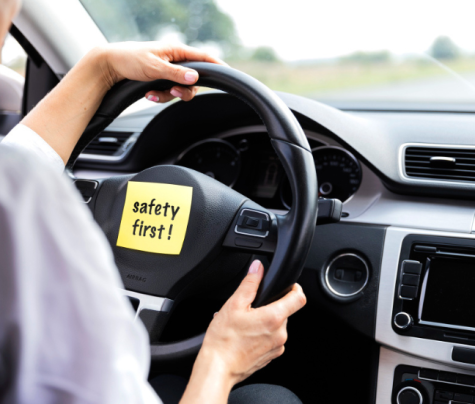
Getting a visa, ugh, it can feel like trying to solve a Rubik’s cube blindfolded. No really!
Even if you technically meet all the requirements, a ton of people still get rejected just because their documents aren’t quite right.
Immigration officers lean heavily on what you hand over, so even a tiny slip-up—like, really tiny—can cause delays…or, worse, a flat-out “no.”
For this reason, understanding the correct procedures, including how to manage TLS documents when using official submission centres, is crucial to a successful outcome.
Honestly, it’s often not that someone doesn’t qualify. It’s just that their paperwork is messy, incomplete, or doesn’t line up.
Avoiding these common visa application mistakes can make a big difference.
Why Document Submission Matters?
Your visa application is basically only as strong as the documents you provide.
We’re talking passports, bank statements, employment letters, travel itineraries, sponsorship papers—the whole shebang.
Missing one, mixing up the order, or having conflicting info…yeah, suddenly your application looks shaky.
And trust me, immigration officers notice these things.
What Are Some Common Visa Application Mistakes?
These are some common visa application mistakes that are delaying your process.
And guess what? It is really simple to avoid them! So, I am laying out the common mistakes below.
Additionally, I will also give you detailed handouts on how to avoid them. Let’s get into it!
1. Incomplete Or Missing Documents
This is classic. Even if you forget a single document, it can prove to be dreadful.
It can be anything from a bank statement to an expired medical certificate.
Any single missing document can tank your application. Like, seriously, one tiny thing.
How Can You Avoid It:
- Firstly, you must stick to the official checklist for your visa type.
- Secondly, and very importantly, you must explain any documents that don’t apply. You must ensure taht you don’t just leave them blank.
- Finally, and most importantly, you need to include originals and copies. Additionally, you need to carry the certified translations if needed.
2. Inconsistent Or Inaccurate Information
You wouldn’t think it, but a tiny spelling difference can set off alarm bells. Trust me, the authorities won’t spare something as trivial as a wrong date.
Well, maybe it is not as trivial as we think!
Even small inconsistencies across forms or documents can make immigration officers…well, suspicious.
How To Avoid It:
- Firstly, you need to make a copy of the info straight from your passport or official records.
- Secondly, please make sure you double-check every form against supporting documents.
- Finally, you need to have someone else look over it, too—you might miss something.
3. Missing Signatures Or Dates
If you are carrying or submitting any unsigned or undated forms, affidavits, sponsorship letters…yeah, they’re a nightmare.
Then, the Officers can’t process them properly. So, they will either reject or delay your application.
How To Avoid It:
- Firstly, you must look over every page for signatures and dates.
- Additionally, you need to double-check. Use the date format they ask for. Please don’t improvise.
- Finally, you have to make sure that anyone signing on your behalf is authorized. It can be sponsors or translators. Make sure they fill in all the details.
4. Poor-Quality Copies Or Scans
If you are submitting any blurry, cropped, or hard-to-read scans, uh oh! Big problem.
If they can’t see your info clearly, your application can stall for no good reason.
How To Avoid It:
- Firstly, you can scan documents if you can, rather than snapping a phone photo.
- Additionally, you must check that stamps, seals, and signatures are visible.
- Finally, you must label files clearly and try to keep them organised—not as easy as it sounds, I know.
5. Late Submission Or Missed Deadlines
Procrastination will bite you here. Waiting until the last minute to gather paperwork, get translations, or authenticate documents is basically asking for stress. And rejection.
How To Avoid It:
- Firstly, you must start early. You need to start months before your travel date.
- Additionally, you must set your own internal deadlines before the official ones.
- Finally, you must build in a buffer for “just in case” issues because there will be issues.
6. Weak Financial Or Supporting Evidence
Visa officers want proof you’ve got the money, or that your sponsor is solid. Sketchy or unclear documents? Yeah, that usually equals a “no.”
How To Avoid It:
- Firstly, you must include several months of bank statements.
- Additionally, you ned to add employment contracts, payslips, or tax records.
Finally, you must make sure that sponsor letters clearly show their income and status. Please don’t leave it vague.
7. Ignoring Formatting And Legalisation Rules
Some visas need notarized, apostilled, or embassy-legalized papers. Just handing over plain copies…won’t cut it.
How To Avoid It:
- Firstly, you need to check formatting and legalisation rules ahead of time.
- Additionally, you can use certified translators and keep originals plus translations.
- Finally, you must stick to official legalisation channels.
8. Submitting To The Wrong Centre
Sending docs to the wrong office—or using an unauthorized channel—is surprisingly common. And it just wastes time.
How To Avoid It:
- Firstly, you must confirm which centre or platform is official for your area.
- Secondly, you need to use only approved submission methods. It can be an online, courier, or in-person drop-off.
- Additionally, you can call the helpline if you’re unsure. Seriously, just call.
What Are Some Best Practices For Avoiding Common Visa Application Mistakes?
These are just some general practices you can refer to if you want to be completely certain of your document submission.
Additionally, you can make the process more efficient by using these.
- Start early — grab documents months in advance.
- Personalize your checklist — make it fit your visa type.
- Stay consistent — same naming style for all files.
- Audit carefully — check signatures, translations, and legalizations.
- Keep backups — digital and hard copies.
- Get expert help if needed — sometimes a professional glance saves you headaches.
Avoid These Mistakes For A Successful Visa Application!
Getting a visa isn’t just about eligibility. It’s really about clean, accurate paperwork.
So, if you dodge the common mistakes above, you cut your risk of delays or rejections big time.
Additionally, you must remember that every little step matters.
From certified translations to submitting through approved centres like TLScontact, the process runs smoothly when you pay attention.
A little planning, double-checking, and organizing goes a long way. Nail it, and your chances of approval on the first try go way up.
Read Also:
- Things to Know Before Applying for a UK Spouse Visa
- 6 Ways to Strengthen Your Case for a UK Spouse Visa
- A Journey To Love Across Borders: Understanding Legalities Of Fiance Visa










0 Reply
No comments yet.